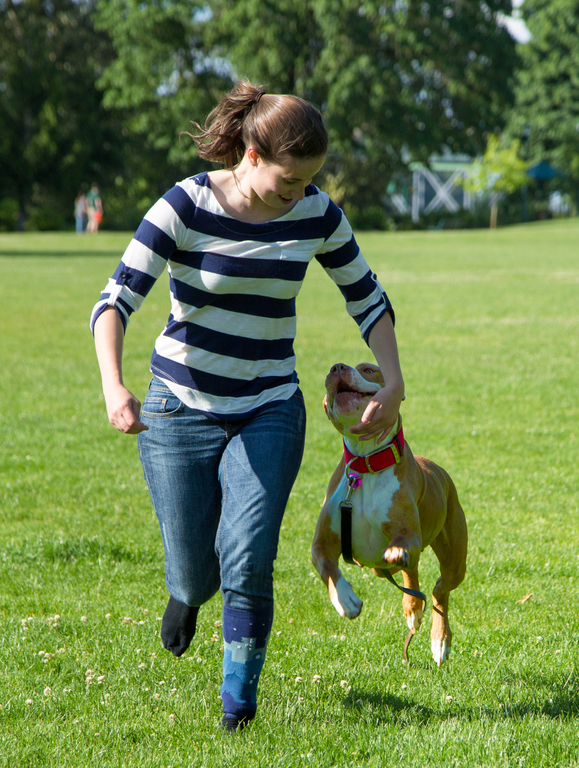In the realm of canine anatomy, the presence of whiskers on dogs goes beyond mere ornamentation, delving into a realm of functionality that is crucial for their daily lives. These specialized sensory hairs, known as vibrissae, serve as a vital tool for dogs, aiding them in various aspects of their existence.
From enhancing their perception of the environment to communicating emotions, the significance of dog whiskers is deeply intertwined with their sensory acuity and overall well-being. To truly grasp the importance of these seemingly unassuming appendages, one must consider the intricate ways in which they shape a dog's interactions with the world.
Key Takeaways
- Dog whiskers serve sensory functions beyond aesthetics.
- Whiskers aid in perception, communication, and emotional expression.
- They play a vital role in navigating surroundings and interpreting the environment.
- Understanding and caring for dog whiskers is essential for their well-being and communication.
Sensory Role of Dog Whiskers
Dog whiskers, with their intricate structure and sensory capabilities, play a crucial role in enhancing a dog's perception of its environment. These specialized hairs, known as vibrissae, are densely packed with nerves that transmit sensory messages to the dog's brain.
By being sensitive to even the slightest changes in air currents, whiskers assist dogs in navigating their surroundings effectively. They aid in improving a dog's visual acuity by helping them interpret object size, shape, and speed. Different breeds exhibit variations in whisker density and coarseness, with hunting breeds typically having more robust whiskers.
Perception Enhancement Through Whiskers
Enhancing a dog's perception of its environment, whiskers serve as vital sensory tools that facilitate accurate navigation and interpretation of surroundings. These specialized hairs are not just for aesthetics; they play a crucial role in helping dogs make sense of the world around them. The following table highlights the key aspects of how whiskers aid in perception enhancement:
| Aspect | Function | Importance |
|---|---|---|
| Sensing Air Currents | Detect changes in airflow, aiding in spatial awareness and movement. | Vital for dogs to navigate safely and avoid collisions in various terrains. |
| Interpreting Object Size | Help perceive the size, shape, and distance of objects accurately. | Essential for dogs to assess their environment and react accordingly. |
| Sensory Communication | Express emotions and intentions, facilitating non-verbal communication. | Plays a significant role in dog-to-dog interactions and emotional signaling. |
Whiskers: Essential for Dogs' Senses

An integral component of a canine's sensory toolkit, whiskers serve as indispensable aides in perceiving and interacting with the world. They play a crucial role in a dog's sensory functions, providing valuable information about their environment.
- Whiskers help dogs sense nearby objects, aiding in spatial awareness.
- They assist in navigating in low-light conditions by detecting subtle changes in air currents.
- Whiskers serve as a protective mechanism for the eyes, preventing potential harm.
- Their ability to move independently allows dogs to assess the environment's layout effectively.
Emotional Signals via Dog Whiskers
The role of whiskers extends beyond sensory perception in dogs, as they serve as intricate communicative tools conveying a range of emotional signals. Dogs utilize their whiskers to express various emotions and intentions, providing valuable insights into their state of mind. Here is a breakdown of some emotional signals that dogs may convey through their whiskers:
| Emotion | Whisker Position | Description |
|---|---|---|
| Contentment | Relaxed | Whiskers are calm and not stiff. |
| Alertness | Forward | Whiskers are pushed slightly forward. |
| Aggression | Stiffened | Whiskers are rigid and tense. |
| Fear | Flared | Whiskers are pushed outwards. |
Utilitarian Aspects of Dog Whiskers

Facilitating dogs' sensory perception and environmental interaction, dog whiskers serve as vital tools in their daily navigation and communication.
- Whiskers help dogs navigate their surroundings by detecting changes in air currents.
- They assist in enhancing a dog's vision by providing information about object size, shape, and speed.
- Dog whiskers aid in expressing emotions during communication with other dogs or humans.
- These specialized hairs contribute to dogs' spatial awareness, helping them avoid obstacles and move safely through different terrains.
Whiskers: More Than Aesthetic Features
Dog whiskers are not merely aesthetic features but integral sensory tools that profoundly impact a dog's perception and communication abilities. These specialized hairs, known as vibrissae, are rich in nerves that send vital sensory messages to a dog's brain.
They play a crucial role in helping dogs navigate their surroundings by detecting changes in air currents. Whiskers aid in enhancing a dog's vision, allowing them to see more clearly, interpret object size, shape, speed, and express emotions during communication.
Different breeds possess varying sizes and densities of whiskers, with hunting breeds often having denser and coarser whiskers. Understanding the functional significance of dog whiskers highlights their importance beyond just their appearance, showcasing their essential role in a dog's sensory experience and social interactions.
Whiskers Aid in Spatial Awareness

Aiding in spatial awareness, dog whiskers serve as critical sensory tools that enhance a dog's perception of its environment. Dogs rely on their whiskers to navigate through various terrains, detect obstacles, and assess the spatial layout around them. Here are four key ways in which whiskers aid in spatial awareness:
- Whiskers help dogs sense nearby objects and obstacles, preventing collisions.
- They assist in determining the size, shape, and speed of moving objects in the environment.
- Dog whiskers aid in navigating in low-light conditions by detecting subtle changes in air currents.
- The bending of whiskers alerts dogs to the proximity of objects, enhancing their spatial perception and ability to move safely.
Whiskers and Canine Communication
Whiskers on dogs not only enhance their spatial awareness but also play a significant role in facilitating communication among canines. In the realm of canine communication, whiskers serve as a key indicator of a dog's emotional state and intentions.
When a dog is feeling threatened or aggressive, their whiskers may flare outwards, signaling a warning to others. Conversely, during social interactions or displays of submission, a dog's whiskers may relax and lay flat against their face.
Understanding Dog Whiskers' Importance

The significance of understanding the importance of dog whiskers lies in their multifaceted sensory functions and communicative role within canine behavior.
- Dog whiskers serve as sensory tools for navigating surroundings and detecting changes in air currents.
- They aid in perceiving object size, shape, and speed, enhancing a dog's spatial awareness.
- Whiskers play a crucial role in expressing emotions, helping dogs communicate their feelings and intentions.
- By observing a dog's whiskers, one can identify signs of distress, threat, or other emotional states, contributing to better understanding dog behavior.
The Functionality of Dog Whiskers
Functionality of Dog Whiskers enhances dogs' sensory perception and communication abilities through their specialized structure and neural connections. Dog whiskers are not just decorative; they serve a crucial purpose in helping dogs interpret the world around them. Below is a table highlighting key functions of dog whiskers:
| Functionality of Dog Whiskers | Description |
|---|---|
| Sensing changes in air currents | Helps dogs navigate their surroundings |
| Enhancing vision clarity | Aids in interpreting object size, shape, and speed |
| Expressing emotions | Assists in communication with other dogs |
| Detecting threats | Indicates potential danger or distress |
| Providing spatial awareness | Helps dogs move safely through different terrains |
Understanding the functionality of dog whiskers is essential for appreciating their role in a dog's daily life.
Significance of Dog Whisker Sensitivity

Emphasizing the intricate sensory capabilities of dog whiskers, their heightened sensitivity contributes significantly to a dog's perceptual acuity and environmental awareness.
- Dog whiskers are highly sensitive tactile hair receptors.
- They can detect even the slightest changes in the surrounding environment.
- Whiskers help dogs navigate in the dark and assess the size and shape of objects through touch.
- Their ability to sense air currents aids dogs in detecting nearby movements and potential dangers.
Care Tips for Dog Whiskers
How can dog owners ensure proper care for their pet's whiskers? Taking care of your dog's whiskers is essential for their sensory functions and overall well-being. Avoid trimming or cutting them, as whiskers are deeply rooted and cutting them can be painful and disorienting for your pet. Regularly check for any damage or dirt accumulation in the whiskers and gently clean them if needed. Follow proper grooming practices to maintain the health and sensitivity of the whiskers. Understanding the shedding and regrowth cycle of whiskers can also help in monitoring their condition. Below is a table summarizing key care tips for dog whiskers:
| Care Tips for Dog Whiskers | ||
|---|---|---|
| Avoid trimming or cutting | Regularly check for damage | Gently clean if needed |
| Follow proper grooming practices | Understand shedding and regrowth cycle |
Whiskers: A Vital Canine Tool

Dog whiskers serve as indispensable sensory tools for canines, enhancing their perception and communication abilities.
- Whiskers aid in detecting changes in air currents, assisting dogs in navigation.
- They help dogs see more clearly, interpret object size, shape, and speed.
- Different breeds possess varying sizes and numbers of whiskers.
- Whiskers play a crucial role in expressing a dog's emotions during communication.
Conclusion
In conclusion, dog whiskers serve as vital sensory appendages that play a crucial role in enhancing a dog's perception, communication, and overall well-being. Their physiological importance goes beyond mere adornment, allowing dogs to navigate their environment effectively and convey emotional states.
Understanding the nuanced functions of dog whiskers sheds light on the intricate ways in which these specialized hairs contribute to a dog's holistic experience, emphasizing their indispensable role in enhancing a dog's sensory acuity and communicative repertoire.




